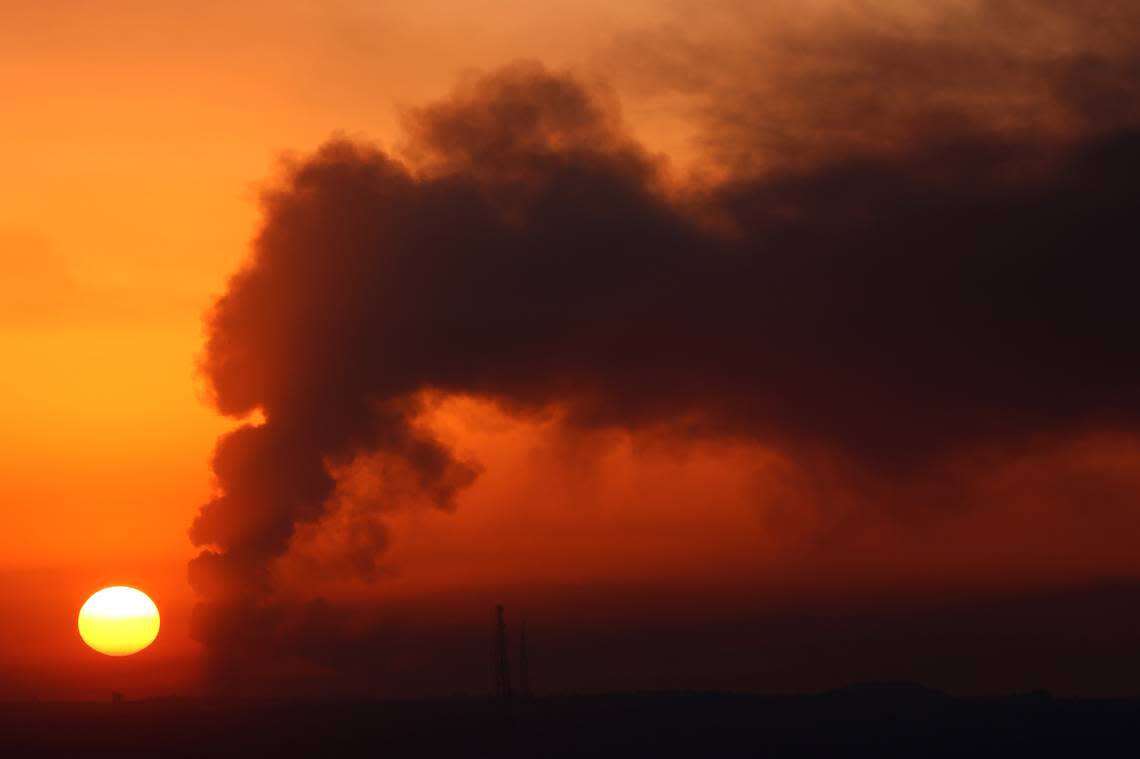The U.S. economy is roaring. But Americans have good reason to worry. This is why
Labor market numbers show great strength in our nation’s economy: Some 216,000 jobs were added to the U.S. economy in December, making a 2.7 million job growth for the year, the third-best showing in this century.
The unemployment rate remained at 3.7%. (In Idaho it’s even lower: 3.3%.) This was the 25th consecutive month below 4%, something not seen since the 1960s. Diane Swonk, chief economist for KPMG, said, “In many ways, the labor market is at its best place it has been, not only since (before COVID), but by some measures in decades.”
The value of total output grew at a blistering annualized rate of 8.2% in the third quarter of 2023, the latest for which we have data. Compared with the same quarter in 2022, it was 6.2 percentage points higher. This is very strong.

On the inflation front: Consumer prices rose at a 1.2% annual rate in November and were 3.1% higher than 12 months earlier. The number for all of 2023 will be one of the lowest among the world’s major industrialized economies. Average earnings are outpacing inflation, and this is most true for lower-income workers. Stock-market indexes remain near record highs, and interest rates are starting to drop.
So the economy is in great shape by most objective measures — yet polls show a large fraction of the voting public still think it is terrible. This perception/reality gap is a problem for political scientists and pundits, not to mention President Joe Biden’s reelection campaign.
For economists though, the question is how these economic variables will perform going forward. That is always an unknown. But the current abyss underlying the foundation of one’s reasonable expectations is huge. As with the first days of 1914, or 1930, or 1942, a number of shocks today lie in wait that could have it all come crashing down.
Why?
Risk, uncertainty, indications of momentous events
Some distinctions must be understood. The first is the difference between “risk” and “uncertainty.”
No one knows the future. But risk is the more common situation, where one has some historical trend or actuarial information or financial instrument prices on which to make estimates or forecasts. If you can protect your interests by buying insurance or futures contracts or options, you face risk.
Uncertainty is scarier. It involves not knowing the future and not having any source of data on which to make an objective forecast. For example, at the beginning of the years they occurred, forecasters could not know that San Francisco would have a major earthquake in 1906, that World War I would break out in 1914, that the New York Stock Exchange would collapse in 1929 or that Russia would launch a major war against Ukraine in 2022. In January 1918 and 2020, we did not know the most deadly pandemics in modern history lay only months or weeks ahead.
Not that there aren’t indications. As with 1862 and 1942, it is clear momentous things may soon unfold. Those were years when the United States stood at the brink, or already at the start, of major wars. Today the fuse is already sputtering, or actively burning, in places all around the world — but we don’t know exactly which peril we face or how great it would be.
A second distinction for economists is between “endogenous” and “exogenous” shocks. Endogenous ones are internal to an economic system: Although it spread internationally, the market bubble in collateralized mortgages that was building two decades ago was internal to our economy; so too was the enormous boost the Federal Reserve gave to the money supply in 2021-22 to mitigate the effects of COVID, at the assumed risk of ballooning inflation.
Exogenous factors, or “shocks,” arise outside an economy. The Japanese attack on Pearl Harbor in 1941, the outbreak of COVID in 2020, Russia’s assault on Ukraine in 2022 and the violent uprising of Hamas in Gaza in October months ago are exogenous shocks. So is the possibility of a major presidential candidate upending the global trade and tariff regime, if he gets elected, even as he faces multiple criminal indictments. So too are impoverished tribesmen in a barren Arabian Peninsula country using drones to shut down the most economically vital waterway in the world.
Without shocks, economy in ‘24 likely to be good
Unpredictable results stem from uncommon situations. After a half-century of hundreds of economists spending millions of dollars to build mathematical economic forecasting models, few are of greater use than the ruler in a sixth grader’s backpack.
Forecasters can be quite precise at variations around a trend — so long as the trend continues. However, they are terrible at predicting when a trend will suddenly and sharply change.
So looking at the numbers, minus external shocks, one can say that the U.S. economy in 2024 is likely to be good — with continued growth of real output and earnings, low inflation and unemployment and increasing jobs. Stock prices will be stable or possibly up. Interest rates will fall a bit.
Unfortunately, perhaps tragically, the likelihood of external shocks slamming the U.S. economy is high. The question of which ones will hit, when, and how hard, is unanswerable in any objective sense.

Mideast today looks like Europe in 1914
The Mideast today frighteningly parallels Europe in 1914. On June 27 of that year, diplomatic tensions in Europe were at their lowest level in years. The next morning, a frail Bosnian student shot an Austrian archduke. Austria threatened Serbia, which had fomented the assassination. Russia backed its ally Serbia. Germany backed its ally Austria. France had signed a treaty to aid Russia in case of war with Germany. Britain had an unwritten commitment to help France and a treaty guaranteeing it would defend Belgium against attack by anyone. It would take 51 months and 40 million dead before peace in Europe returned, with U.S. ground forces playing a small role in the last months.
In October of last year, Hamas in Gaza launched a barbaric attack on Israel. A politically weak Israeli government responded with great force. This outraged many Arabs and Muslims of other ethnicities. Hamas, like Hezbollah in Lebanon, is backed by Iran. Sunni Muslim Saudi Arabia and smaller Persian Gulf states hate and fear Iran — a nation that is Shiite Muslim and not Arab. Yemen is a client state of its rich neighbor Saudi Arabia, but is locked in an internal war with Houthi rebels supported by Iran.
The Houthis had only primitive rockets, but following the example of Ukraine, they are mastering the use of drones to deliver explosives with precision. A few good hits on the bridges of container ships in the Red Sea headed toward or from the Suez Canal could shut a global economic artery. Saudi Arabia might then launch harsher and indiscriminate attacks on Houthis, and the dominoes could start falling. Iran might come to the Houthis’ aid by shutting down the Persian Gulf and attacking Saudi installations. Brakes would slam on the world economy. At worst, Iran might use a nuclear weapon. Israel then might respond in kind.
One could spin similarly grim scenarios for Ukraine and Russia. And for Asia, if China’s Xi Jinping is emboldened and makes a military grab for Taiwan, leading Japanese, South Korean, Australian and Indian submarines to join U.S. and Taiwanese subs in choking off all China’s imports. At worst, the U.S. sends a naval task force to defend Taiwan, and a Chinese hypersonic missile succeeds in the first sinking of a U.S. aircraft carrier since 1944.
One can also think up internal U.S. “shock” scenarios — such as further political violence involving Donald Trump and his supporters — where, instead of respecting objective rules of law and democracy, the very legitimacy of those rules is questioned, because they are inconvenient to one man’s desired ends.
In summary, the U.S. economy probably will be fine in 2024 unless something goes wrong. As my mother would say, “Hope for the best and expect the worst.”
Reach economist and writer Edward Lotterman at stpaul@edlotterman.com.
They have Milei. We have Trump. We’re closer to Argentina’s chaos than we think | Opinion
Moscow killings affect people with no ties to them. These are the unseen economic costs
This is what’s better about our economy today than in ’70s and ’80s — and what’s worse
